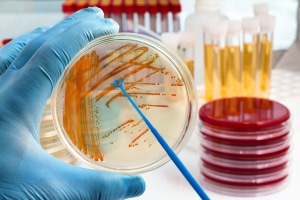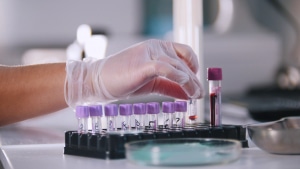LDTs Drive Clinical Mass Spectrometry
Within the analytical instrumentation industry, mass spectrometry is certainly one of the most dynamic areas for growth over the next several years. Its increasingly sensitive analytical capabilities and enhancements continue to bring the technology to the edge of new scientific discovery and research applications. While SDi covers the market for eight separate mass spec techniques in its flagship publication, the Global Assessment Report, it does so from a broad perspective that looks across all end markets. Clinical mass spec, however, is one particular end market that has been at the root of very rapid mass spec growth over the past few years, and will continue to be for the foreseeable future.
SDi’s latest publication, The 2019 Mass Spectrometry Market for Clinical Applications, dives into the world of clinical diagnostics to examine how robust demand from laboratories in this space is shaping the market for mass spec technologies. The report presents market data and insights into six categories of clinical mass spec, although two categories in particular are responsible for the most disruptive market influences in recent years: MALDI-TOF and triple quadrupole LC/MS.
MALDI-TOF is used mostly in microbiology labs while triple quad LC/MS covers multiple application areas, including toxicology, therapeutic drug monitoring, vitamin D quantitation, newborn screening, and more. While these two mass spec categories cover 
LDTs are pervasive throughout the clinical laboratory market. They consist of a wide variety of in vitro diagnostic (IVD) tests that are developed and used by a single laboratory for diagnostics in human patients. They span a variety of analytical tools and techniques, and that includes the majority of tests for clinical mass spec, where it is generally considered fair practice to employ the technique for diagnosing its target patient population as long as the assay

meets certain performance standards. Most mass spec assays are LDTs, although the immunoassays they replace have usually been through an IVD approval process from a regulatory authority.
LDTs performed in the US (or returned to the US) are regulated by the Centers for Medicare & Medicaid Services (CMS), in compliance with the Clinical Laboratory Improvement Amendments of 1988 (CLIA). The CLIA dictates that an LDT must maintain a certain level of performance, reproducibility, and validity, and is carried out with proper procedures and documentation. While the FDA can also oversee LDTs, it has not historically enforced this authority. This may very well change in the future, however, as in the last few years the FDA has sought additional oversight of LDTs and to require certain high-risk LDTs to be subject to pre-market review. For now, the future of such regulation remains uncertain. In Europe, LDTs are similarly regulated by the EU In Vitro Devices Regulation (IVDR). Approved by the European Parliament and European Council in 2017 and coming into full force in May 2022, the IVDR will mandate that health institutions should be able to manufacture diagnostic devices or methods in-house which cannot be met at the appropriate level of performance by an equivalent device on the market.
The future of LDT regulation is an important consideration for the clinical mass spec market and there is plenty of apprehension about it in the industry. In the case of MALDI-TOF, suppliers have used the regulatory process to their

advantage, as the popularity of medical device units have soared over just the past five years. It is not so straightforward with triple quad LC/MS. While it is true that the recent IVD approval for vitamin D assays has helped this market considerably, that is only one application area, and it was one that was perhaps easier for suppliers to obtain approval because of its lower risk compared to other IVD assays.
LDTs still comprise the majority of the clinical mass spec market and if laws are enacted which make its regulatory process stricter, two consequences will naturally arise. First, laboratories will have to draft extensive justifications of their LDTs, and it will take much time and effort for these to be approved. Second, mass spec suppliers will be more inclined to seek medical device status for their instruments, and this will take years. But rather than jump to the conclusion that stricter LDT regulation will have an adverse effect on market growth for clinical mass spec, SDi believes this market is strong enough to thrive under either scenario.
It seems more likely than not that the FDA (and other international regulatory agencies) will soon increase oversight of LDTs, and while this may cause some market headwinds, the advanced analytical capabilities and sensitivity of clinical mass spec has become too vital to the IVD market to stop its progress, particularly in areas related to proteomics, hormone analyses, and molecular diagnostics. IVD and clinical research applications are expanding, not only just for MALDI-TOF and triple quad LC/MS, but for other innovations that are mapped out in this recent publication. Whether mass spectrometry is used as a medical device or for LDTs, clinical laboratories will continue to embrace its advancements, adapting as needed.



